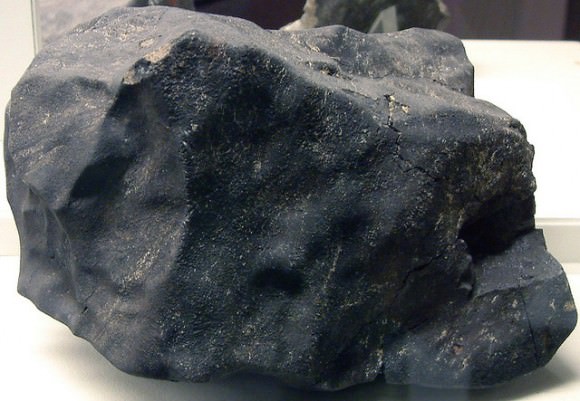Some of science’s most pressing questions involve the origins of life on Earth. How did the first lifeforms emerge from the seemingly hostile conditions that plagued our planet for much of its history? What enabled the leap from simple, unicellular organisms to more complex organisms consisting of many cells working together to metabolize, respire, and reproduce? In such an unfamiliar environment, how does one even separate “life” from non-life in the first place?
Now, scientists at the University of Hawaii at Manoa believe that they may have an answer to at least one of those questions. According to the team, a vital cellular building block called glycerol may have first originated via chemical reactions deep in interstellar space.
Glycerol is an organic molecule that is present in the cell membranes of all living things. In animal cells this membrane takes the form of a phospholipid bilayer, a dual-layer membrane that sandwiches water-repelling fatty acids between outer and inner sheets of water-soluble molecules. This type of membrane allows the cell’s inner aqueous environment to remain separate and protected from its external, similarly watery world. Glycerol is a vital component of each phospholipid because it forms the backbone between the molecule’s two characteristic parts: a polar, water-soluble head, and a non-polar, fatty tail.
Many scientists believe that cell membranes such as these were a necessary prerequisite to the evolution of multicellular life on Earth; however, their complex structure requires a very specific environment – namely, one low in calcium and magnesium salts with a fairly neutral pH and stable temperature. These carefully balanced conditions would have been hard to come by on the prehistoric Earth.
Icy bodies born in interstellar space offer an alternative scenario. Scientists have already discovered organic molecules such as amino acids and lipid precursors in the Murchison meteorite that landed in Australia in 1969. Although the idea remains controversial, it is possible that glycerol could have been brought to Earth in a similar manner.

Image credit: James St. John
Meteors typically form from tiny crumbs of material in cold molecular clouds, regions of gaseous hydrogen and interstellar dust that serve as the birthplace of stars and planetary systems. As they move through the cloud, these grains accumulate layers of frozen water, methanol, carbon dioxide, and carbon monoxide. Over time, high-energy ultraviolet radiation and cosmic rays bombard the icy fragments and cause chemical reactions that enrich their frozen cores with organic compounds. Later, as stars form and ambient material falls into orbit around them, the ices and the organic molecules they contain are incorporated into larger rocky bodies such as meteors. The meteors can then crash into planets like ours, potentially seeding them with building blocks of life.
In order to test whether or not glycerol could be created by the high-energy radiation that typically bombards interstellar ice grains, the team at the University of Hawaii designed their own meteorites: small bits of icy methanol cooled to 5 degrees Kelvin. After blasting their model ices with energetic electrons meant to mimic the effects of cosmic rays, the scientists found that some molecules of methanol within the ices did, in fact, transform into glycerol.
While this experiment appears to be a success, scientists realize that their laboratory models do not exactly replicate conditions in interstellar space. For instance, methanol traditionally makes up only about 30% of the ice in space rocks. Future work will investigate the effects of high-energy radiation on model ices made primarily of water. High-energy electrons fired in a lab are also not a perfect substitute for true cosmic rays and do not represent effects on ice that may result from ultraviolet radiation in interstellar space.
More research is necessary before scientists can draw any global conclusions; however, this study and its predecessors do provide compelling evidence that life as we know it truly could have come from above.


Even after you have all the parts/ingredients, you still have a gap between inert ingredients and a functional cell. How do those part make a functioning whole? Surely you are not suggesting they assembled themselves, because that demands some form of cognizance from inert matter.
Just a small point about terminology. Aren’t small bodies (i.e., “rocks in space”) more correctly called “meteoroids?” And isn’t the term “meteor” only used to describe those small bodies during the brief period when they are traveling through Earth’s atmosphere? (The last term in the trio is “meteorite,” which describes a “rock” that has survived the fall through Earth’s atmosphere and is still large enough to be picked up.) This terminology has been the convention for some time now.